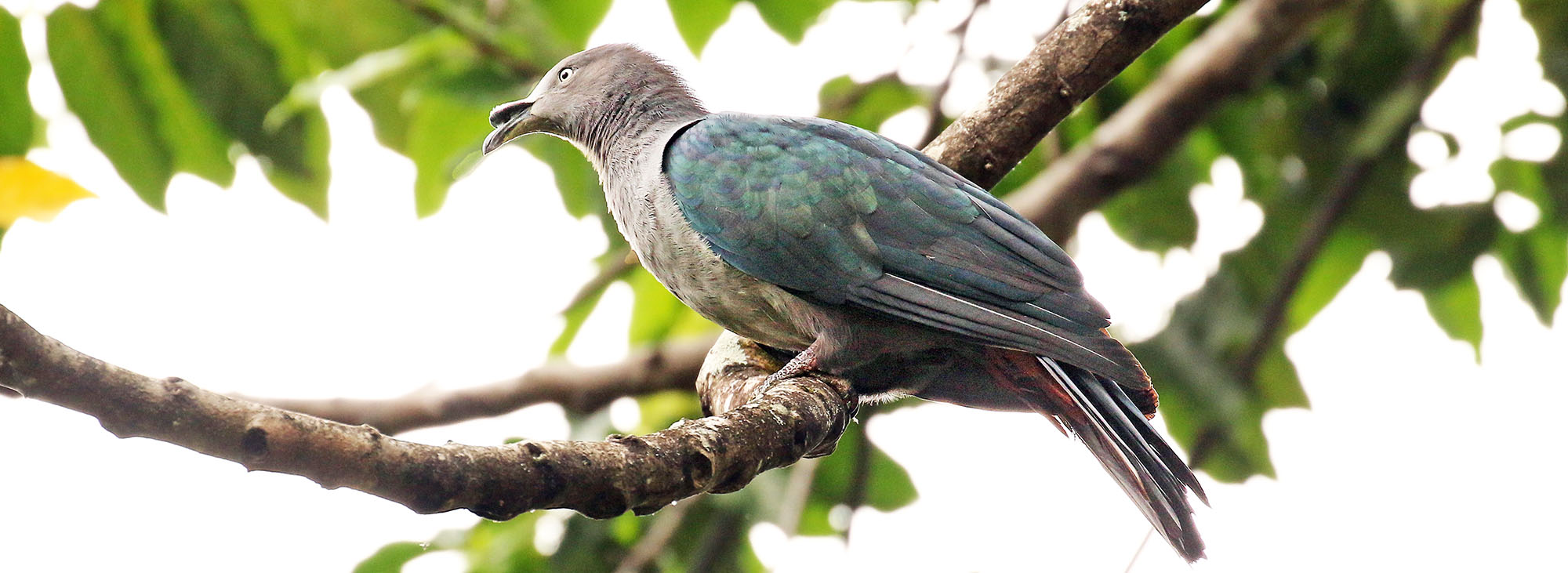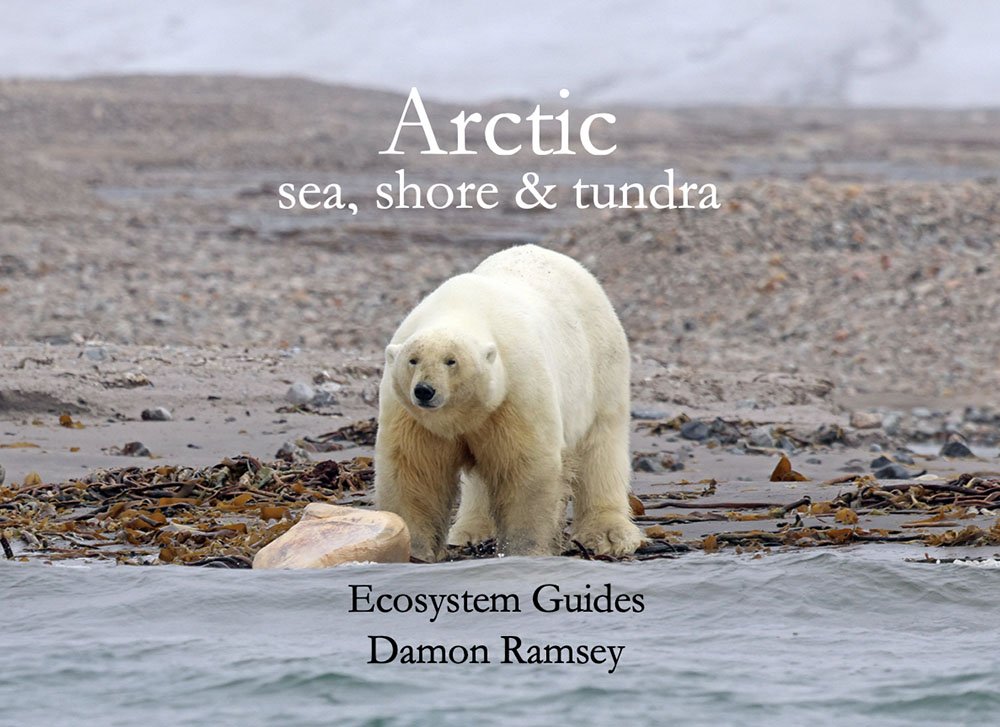ecosystem-guides.com
....exploring the planet's ecosystems
OCEANIAN (TROPICAL PACIFIC OCEANIC ISLANDS)
Tropical Moist Forest
The tiny pockets of forest of the small tropical and subtropical islands of the vast Pacific Ocean include only a small number of species, but they are unique for their being remote and often endemic. The biogeography of this region is not really distinct; if you look at the groups of birds found on these islands, such as lorikeets and fruit doves (only a few insects, reptiles and mammals have made it), it is essentially an extension of the north-eastern Australasian flora and fauna, especially New Guinea and Melanesia.
Small lizards are one the vertebrate groups the do the best on remote tropical islands. Part of the reason is that they can disperse widely like few other land animals. They can sitting on a floating log at sea and survive, either on what is there, or without food or water, for weeks and weeks. Some of the island species are striking, such as the one below: the widespread 'Emerald Tree Skink'.
 (Palau)
(Palau)One of the most successful groups of birds (or indeed any land animals) on remote tropical islands are the pigeons and doves.
 'Golden Fruit Dove', (in captivity, Fiji)
'Golden Fruit Dove', (in captivity, Fiji)The Imperial Pigeons are widespread across islands of the Pacific. They are also one of the best plant seed dispersers.
 'Marquesas Imperial Pigeon', endemic to Marquesas Islands in French Polynesia.
'Marquesas Imperial Pigeon', endemic to Marquesas Islands in French Polynesia. 'Barking/Peale's Imperial Pigeon'. Endemic to Fiji.
'Barking/Peale's Imperial Pigeon'. Endemic to Fiji.The family Accipitridae includes all the hawks, kites, and eagles (but not the falcons).
 'Fijian Goshawk'. Found in various habitats, but endemic to Fiji. (Colo-I-Suva, Fiji)
'Fijian Goshawk'. Found in various habitats, but endemic to Fiji. (Colo-I-Suva, Fiji)The family Psittaculidae contains what are usually called the 'Old World Parrots', including all of the Pacific island species, such as the one below: Prosopeia personata, 'Masked Shining Parrot', an endemic to Fiji.
 (Colo-I-Suva, Fiji)
(Colo-I-Suva, Fiji)Honeyeaters of the family Meliphagidae have dispersed out into many Pacific islands from their centre in Australasia.
 Myzomela rubratra, 'Micronesian Myzomela'. Found in northern Mariana islands. (Palau Royal Resort gardens)
Myzomela rubratra, 'Micronesian Myzomela'. Found in northern Mariana islands. (Palau Royal Resort gardens)The three species of '(Fiji) Wattled Honeyeaters' in the genus Foulehaio are found on the islands of Fiji, with one species extending into Polynesia.
 'Northern Wattled Honeyeater' (Colo-I-Suva, Fiji)
'Northern Wattled Honeyeater' (Colo-I-Suva, Fiji) 'Eastern Wattled Honeyeater' (Fulaga, Fiji)
'Eastern Wattled Honeyeater' (Fulaga, Fiji)The family Campephagidae which includes all of the Cuckoo-shrikes, also includes the island species below: Lalage maculosa, 'Polynesian Triller'.
 (Colo-I-Suva resort, Fiji)
(Colo-I-Suva resort, Fiji)The Starlings have colonised and speciated on some island groups. Mynahs have been introduced and thrive on these empty niche islands.
 'Micronesian Starling'. Found in Micronesia, including northern Mariana islands. (Palau Royal Resort gardens)
'Micronesian Starling'. Found in Micronesia, including northern Mariana islands. (Palau Royal Resort gardens) 'Jungle Mynah'. Closely related and resembles Javan Mynah. Introduced from India into Fiji and other islands. (Colo-I-Suva resort, Fiji)
'Jungle Mynah'. Closely related and resembles Javan Mynah. Introduced from India into Fiji and other islands. (Colo-I-Suva resort, Fiji)Land mammals are of course rare as on the tropical Pacific islands as it is difficult for them to colonize these remote islands. One of the notable exceptions are bats (because they can fly), and the Fruit Bats of the family Pteropodidae do especially well.
 (Neiafu, Tonga)
(Neiafu, Tonga)Below is Pteropus pelewensis, 'Pelew Flying Fox/Fruit Bat'. This species is Infamously included in a 'fruit bat soup' in Micronesia.
 (Palau)
(Palau)The 'Insular/Pacific Flying Fox' is found in rainforest, mangroves and around human habitation across many tropical Pacific islands. It is the most geographically widespread of all the flying fox in the Pacific; being recorded in New Guinea, Solomon Islands, Samoa, Tonga, Cook Islands, Tuvalu, Tokelau, Niue, Vanuatu, New Caledonia, Wallis & Futuna and Fiji.
 (Fruit bat mom with young attached, Palau)
(Fruit bat mom with young attached, Palau)Places to experience Oceanic Pacific Island rainforest
Countries, islands, resorts, and national parks that have rainforest in the Pacific islands of Oceania include: French Polynesia, Palau, and the Pitcairn Islands.



